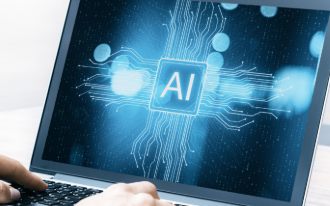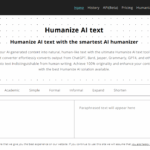In this article, I will discuss the How AI Negatively Impacts the Environment. AI has many benefits, however, its energy consumption, carbon emissions, and electronic waste production during development and use are tremendous.
Understanding these factors is important in order to guide the efforts towards sustainable AI practices that ensure the safety of the Earth for future generations.
What is Environment?
The environment can be referred to as our surrounding nature which includes the air, water, land, and even living organisms. This currently covers forests, oceans, rivers, ecosystems and habitats for different wildlife.

The environment gives us all the necessities needed to live such as supporting human and biological life while also aiding to the productivity of a biodiversity. Safeguarding the environment is important so we can keep the balance in nature as well as nullify any kind of pollution and make the planet a more favorable place to live for many generations yet unborn.
How AI Negatively Impacts the Environment

here is how AI harms the environment specifically considering energy consumption in AI data centers:
Example: Energy Consumption in AI data centers
Greater Deficit of Computational Power
There is a large amount of computational power needed to run AI models, specifically large scale ones.
The training and the operation of AI models require intensive mathematical calculations that make use of high-end GPUs and servers.
Electricity Consumption
AI data centers function around the clock, using an estimated millions of kilowatts every year.
There is a need for energy to run the processors and to cool the systems to ensure they don’t overheat.
Power Generated Water Foot Print
Supplied electricity is primarily provided from non-renewable resources including things such as coal and gas.
AI powered data centers draw power from non-renewable sources like natural gas or coal leading towards severe emissions of CO2 which consequently deteriorates the condition of the environment
Water For Cooling System Usage
AI data centers are in need of massive quantities of water to keep cool.
The abundant use of water is likely to work against the region, leading to gradual depletion of natural reserves** leading to disturbance of the condition of the environment
Electronic Hardware Waste Upgrade
Artificial intelligence has the constant need to upgrade their means which increases electronic waste.
Consume old GPU, ultra powerful servers ports and drives makes to far greater e-waste polution as well as serving or mounting devices.
Mitigation Efforts (Possible Solutions)
Shifting to renewable energy sources for AI infrastructure.
Upgrading firmware to use less energy.
Implementing liquid cooling and other eco-friendly water conservation methods.
Impact of AI on Data Storage Expansion
Data Expansion: AI programs generate and depend on a staggering amount of data which leads to the requirement of further storage infrastructure.
Exothermic Data Facilities: The data storage systems are major consumers of power when it comes to maintaining or chilling large storage compounds.
Data Redundancy: A large quantity of data which is never accessed or only infrequently accessed is often stored.
Hardware Requires Involution: The growing requirements for data storage devices directly impacts the creation of new physical data facilities.
Raised Carbon footprints The inflating energy shackles of hardware creation coupled with the use emit more carbon emissions with AI technology.
Environmental Risks of AI-Driven Cryptocurrency Mining
Augmented Power Usage
AI algorithms further optimize mining operations through continuous efforts, climbing electricity consumption to unprecedented heights.
Carbon Emission Increase
AI-enhanced mining activities greatly increases greenhouse gas emissions, as the vast majority of mining operations rely on fossil fuels.
Depletion of Resources
AI-optimized mining requires constant hardware improvements which escalates the consumption of rare minerals and non-renewable electronic parts.
E-Waste Production
Increased rate of hardware upgrades leads to elevated levels of e-waste which brings forth new pollution and disposal problems.
Clashing with Climate Goals
The environmental implications of AI-driven mining stands at odds with international attempts to combat the carbon emission crisis, as well as efforts towards ecological preservation.
Ethical and Environmental Blind Spots in AI Development
Absence of Ecological Responsibility: The long-term ecological consequences of AI research—especially its performance efficiency—continue to be neglected.
Inadequate Policies: Very few policies regard examining or controlling the environmental impacts of AI during its development and its subsequent phases.
Underestimation of Resource Consumption: The amount of energy, water and other materials that go into the making of AI systems is usually underestimated.
Lack of Evaluation for Sustainability Standards: Environmental parameters are seldom incorporated into the objectives of innovations in AI, or benchmarks of success.
Neglecting Environmental Responsibility Gaps: Concentrating on the ethics of AI has largely meant questions of privacy and fairness, while missing elements of ecological responsibility.
Emerging Solutions and Responsible AI Practices

Green AI
A developing field concentrating on making AI models more efficient on energy, reducing their environmental impact while maintaining effectiveness.
Renewable Energy
An increase in the use of wind and solar energy for powering data centers which run AI systems.
Sustainable Design
The creation of AI components and apparatuses that use less e-waste by using durable and recyclable materials.
Green AI Policies
Collaborations between industry, government, and ecology build framework policies for developing AI technology in environments friendly ways.
Collaborative Efforts
Partnerships among tech companies, government, and social organizations foster development in AI innovation and legislation for better environmental use of AI.
Pros & Cons
| Pros | Cons |
|---|---|
| Reduces energy consumption and carbon footprint | Initial costs of adopting green technologies can be high |
| Encourages innovation in sustainable AI design | Transitioning data centers to renewables may face infrastructure challenges |
| Helps extend hardware life and reduce e-waste | Sustainable materials may limit performance or increase costs |
| Promotes transparency with environmental metrics | Measuring environmental impact accurately can be complex |
| Fosters collaboration for broader impact | Coordination among stakeholders can be slow and difficult |
Conclusion
To summarize AI’s rapid development comes alongside impressive advancements, but it also comes with severe challenges to the environment.
The high energetic productivity, the colossal need for data storage, as well as the computing equipment used, all lead to carbon and e-waste. Not to mention the strain on natural resources during AI-driven activities like cryptocurrency mining.
It is clear that there must be more focus on these impacts and how to properly deal with them encouraging sustainable innovation practices. AAI’s advantages paired with ecological responsibility requires a balance for the proper advancement for ensuring the technology supports our planet.














